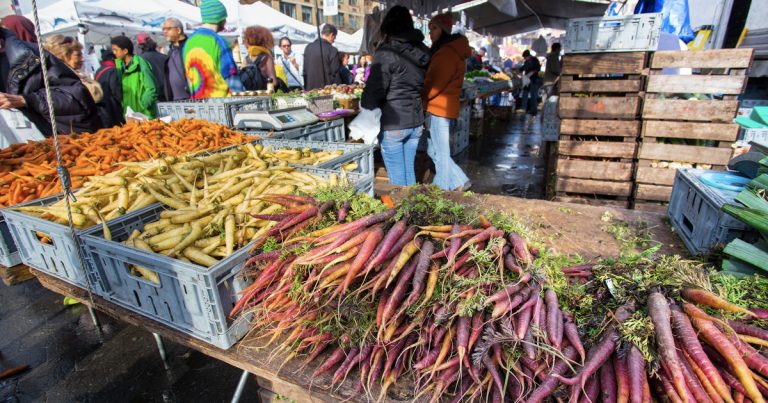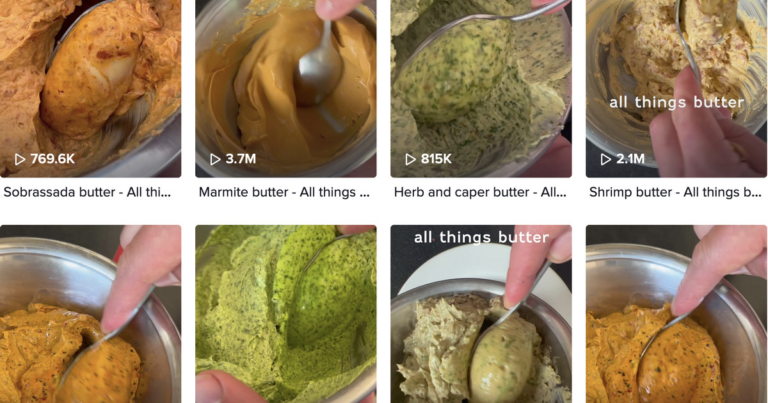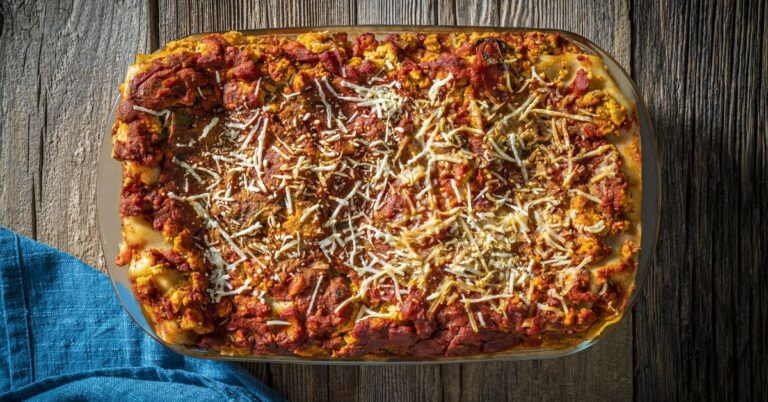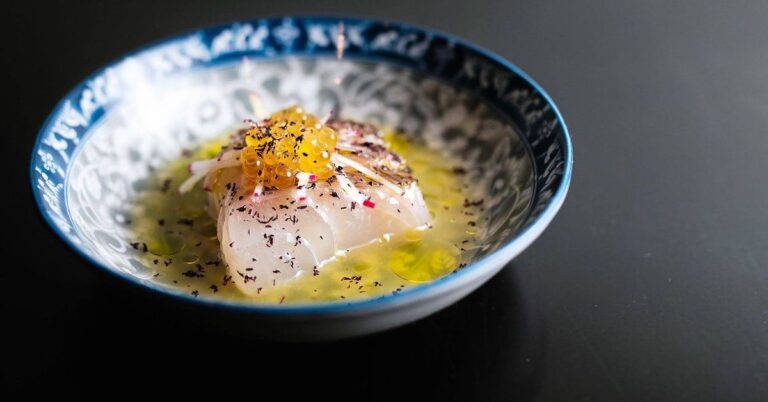A Recipe for Lazos, the Spanish Puff Pastry
If you take Spain’s curvy A-1 highway a full three hours northeast of Madrid you might end up in Pradoluengo. But, then again, you might not, since this is probably the first time you’re hearing about it.
I try to get to Pradoluengo as often as I can. It’s where my dad was born and where a lot of my family still lives. My most recent trip, which I counted as number 11, was last November, and like the seven or so trips before it that I’ve taken alone as an adult, the route was the same. It always goes like this: I take a six-hour flight from New York to Madrid, after which I fall asleep on a two-hour bus ride from the airport to Burgos, the stunning city in Castilla y León and my closest point of reference when people unfailingly tell me they haven’t heard of Prado. At the Burgos bus station I tear up instantly as I catch a glimpse of whichever aunt, uncle, cousin, or some combination of the three is waiting for me. From there, we catch up over the 45-minute, sunflower-field-lined drive to Prado.
My visits are typically spaced a little over a year apart, but little about Prado changes while I’m gone. (During that November visit, the elders in town were a bit pissed about a new camping lodge that opened up with an attached restaurant and boutique, while the younger generation was pleased to welcome a business that’s doing what it can to put Prado on the map.)
All of which is to say, Pradoluengo is a small town. How small? Its most recent headcount clocked in at around 1,151, and my family will be the first to tell you that that number is only getting smaller. Pradoluengo sits at the bottom of a green valley, its name, meaning “long meadow,” an attempt to describe its long and narrow shape. Here, buildings are no taller than five stories; there are no stop lights; and there’s only one major intersection, a fork in the road anchored by Regoluna, one of Pradoluengo’s few but very beloved bars. Still, there is plenty of room for two panaderías.
One is Panadería Pastelería Alarcia, a bread and sweets bakery well into its fifth generation of ownership. Its current owner, Ramon Alarcia, took over the shop in 1994 after studying confectionery in Valencia and apprenticing at a Madrid pastry shop. Before Ramon came along, the tiny storefront was known as Panadería Alarcia and sold only fresh bread to the town and its neighbors.
Ramon runs the shop with his sister, Maria, and mother, Amparo, and the trio only closes each year from December 25 to January 1. One of the early additions to Alarcia’s sweeter offerings after Ramon took over? Lazos, or lacitos, meaning “ties’’ and “little ties,” respectively. Pieces of puff pastry are twisted to look like bows, baked, and then soaked in honey and powdered sugar. Imagine your favorite turnover or tart drenched in honey and sugar, and that’s the genius of a lazo.
On my last trip, Ramon was kind enough to show me around his kitchen, a short walk from the bakery, which smells of fresh loaves and pastry cream. He confirmed for me what I’ve known since I first tried lazos and attempted to find anything online about them: Little is known about the confection’s history. I did find a few Spanish cooking blogs that aligned with Ramon’s recipe, though his version notably (and proudly) uses flour from Briviesca, a town known for its flour mills about 30 minutes away, and honey from Burgos. (If you’re trying to learn about the history of puff pastry, the Internet is generally no help: There’s a lot of insistence that puff pastry was invented by a French dude, when in truth the Arab influence on Spain can’t be discounted when you’re discussing who made the first puff pastry.)
Needless to say, lazos are largely unheard of in the States, even among my food media colleagues. I bring a box from Panadería Pastelería Alarcia back with me after each trip, and so far no one has seemed to notice that the lazos took a car ride, a two-hour bus trip, and a six-hour flight to get to them. They might even taste better that way. But even if you can’t make it to Pradoluengo, you can make Ramon’s lazos from his recipe, printed below.
Lazos Recipe
Makes approximately 30-36 pastries
Ingredients:
For the puff pastry:
800 grams flour, divided
800 grams cold unsalted butter
6 eggs
25 grams salt
Cold water as needed
For the syrup:
800 grams sugar
½ liter of water
100 to 150 grams honey
Powdered sugar, for serving
Instructions:
Step 1: First, make the lean dough. Using a stand mixer with a dough paddle, combine 600 grams flour, eggs, and salt. Mix together until a dough forms. If the dough is too dry, add 1 tablespoon of water at a time and continue to mix until the dough comes together.
Step 2: Pat the lean dough into a square and wrap in plastic. Let the dough rest in the refrigerator for at least 30 minutes.
Step 3: Combine the cold butter and 200 grams flour in a stand mixer fitted with a paddle attachment. Cream the butter and flour together until well combined: The mixture should be pliable, but still cold. Transfer the mixture onto a floured surface and pat into a square roughly the same size as the lean dough, wrap with plastic, and rest in the refrigerator until well chilled.
Step 4: Place the lean dough on an evenly floured surface and put the chilled butter mixture in the center at a 45-degree angle so it looks like a diamond in a square. Roll out the corners of the dough just so there’s enough to cover the butter when you fold the dough over it (like an envelope). Roll out to a 10-inch by 15-inch rectangle about 1/4-inch thick. Make sure your rolling pin and counter are well-dusted with flour.
Step 5: Facing the long side of the rectangle, brush off the excess flour. Brush the entire surface of the dough with cold water. Fold the right third of the dough towards the middle, then fold the left third of dough over it, enclosing it like a letter. This is the first “turn.”
Step 6: Wrap the dough in plastic and chill in the refrigerator for 30 minutes. Then roll the dough out again and repeat the folding steps for a second turn and chill in the refrigerator to rest. Repeat these steps for a total of 4 turns, resting in the refrigerator for at least 15 minutes after each turn so that the dough stays cold.
Step 7: Preheat the oven to 400 degrees.
Step 8: After the 4 turns, roll out the puff pastry into a 1/8 inch-thick rectangle measuring roughly 10 inches by 24 inches. Using a pizza wheel, divide the large sheet of puff pastry in the middle. Brush one side of the dough with water and layer the second sheet on top. Use a rolling pin to firmly press the two sides together.
Step 9: Trim the sides of the puff pastry to straighten the edges. Cut the puff pastry into 1-inch-wide vertical strips using the pizza wheel. Then cut the strips horizontally along the middle.
Step 10: Form the lazos by taking one strip of puff pastry and twisting it at the center to form a bow. Place the puff pastry sheets on top of a baking pan lined with parchment, about 1 to 2 inches apart.
Step 11: Bake the lazos for 15-20 minutes, until golden brown.
Step 12: While the lazos are baking, make the syrup by combining the sugar, water, and honey in a sauce pot. Heat until the sugar dissolves and a syrup is formed. Remove from the heat and allow to cool.
Step 13: Take the lazos out of the oven and cool until they can be handled.
Step 14: Once they’ve cooled, soak each lazo in the syrup for no more than 30 seconds and place on a wire rack over a baking sheet to drip. Serve with powdered sugar.
Ramon Alarcia is the owner of Panadería Pastelería Alarcia, a bakery in Pradoluengo, Spain.
Louiie Victa is a chef, recipe developer, food photographer, and stylist living in Las Vegas.
Recipe tested by Louiie Victa






